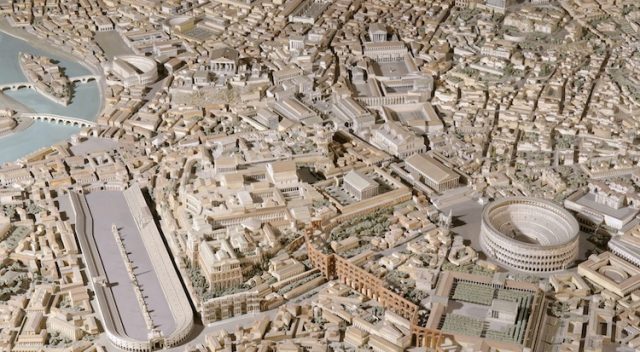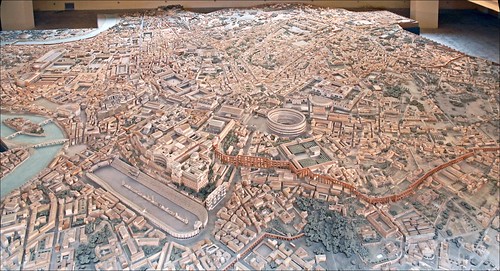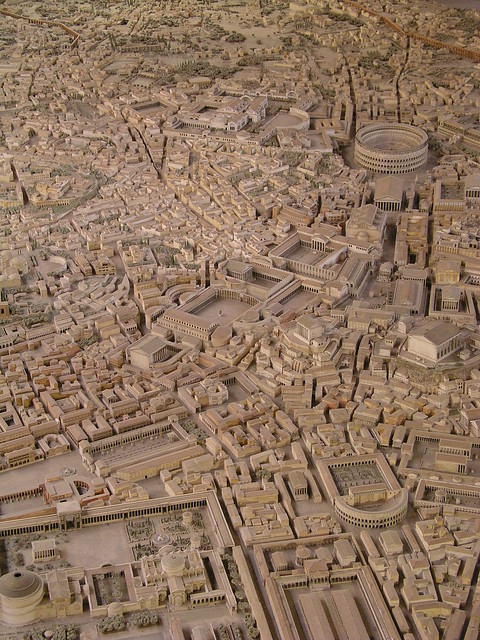The Museum of Roman Civilization hosts one of the most impressive miniature plaster models of ancient Rome ever created, named Plastico di Roma Imperiale. The piece of art was commissioned by Mussolini in 1933 and represents a 1:250 scale model of a 4th century Rome, from the time of Constantine I.
The plaster piece is the creation of the Italian archeologist, Italo Gismondi and it is his life’s work, as it took him 35 years to complete. The prototype of the miniature was first based on the Forma Urbis map made by Rodolfo Lanciani in 1901.
Lanciani originally made the stunning map to be displayed in a large exhibition commemorating the 2000th anniversary of Augustus’ death. Gismondi’s work found its permanent place in the museum in the 1950s but he worked on it a few years more until it reached perfection in 1971. Today, it is considered by archeologists and historians the truest representation of ancient Rome and an important cultural piece.
Since it was commissioned by Mussolini, the miniature has some specific elements of grandeur that stand out, to present Fascist modernism as a current with imperial roots.
The plaster which has a size of 55 feet by 55 feet, also served as a source of inspiration for many scenes from the movie, The Gladiator directed by Ridley Scott.























